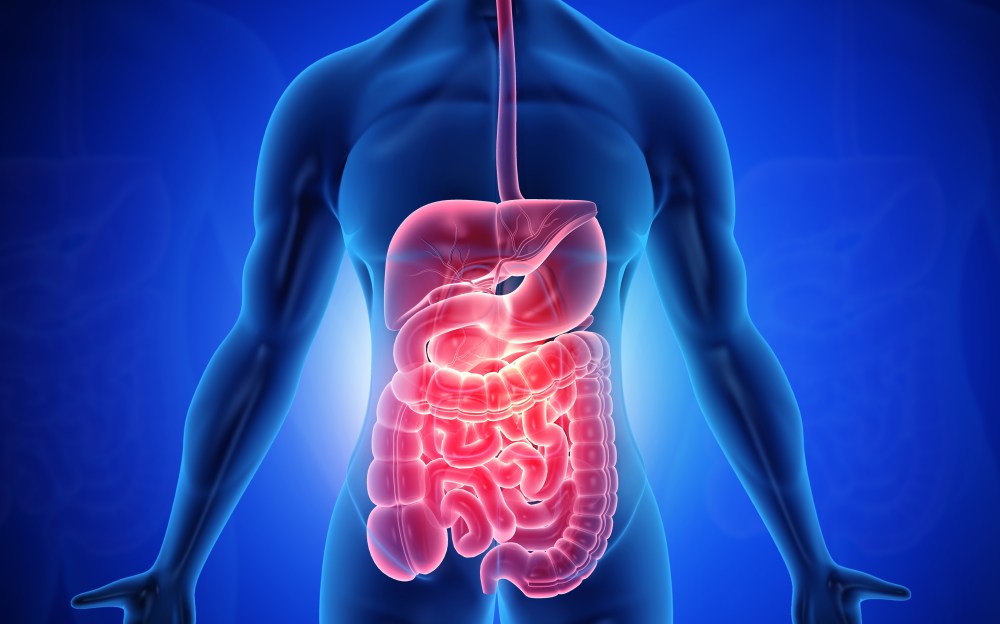At a glance
Heavy metals, such as lead, mercury, and arsenic, can accumulate in the body through food, water, and environmental exposure. Supporting liver function, maintaining metabolic health, and emphasizing nutrient-rich whole foods can help the body naturally detox heavy metals and toxins more efficiently.
Heavy metal accumulation in the body can lead to heavy metal toxicity, associated with cellular damage, inflammation, impaired nervous system function, and cardiovascular disease.
Discover the best heavy metal detox diet and learn what steps you can take to minimize heavy metal exposure.
What are heavy metals?
While certain heavy metals, such as iron, zinc, and copper, are essential for a wide range of physiological functions, others can have detrimental health consequences.
Here are common environmental metals linked to adverse health effects:
- Lead
- Mercury
- Cadmium
- Arsenic
Excessive or long-term exposure to these toxic metals can lead to a buildup of heavy metals in the body, a process known as bioaccumulation.
“While a healthy liver can detoxify some environmental pollutants and metals, its natural capacity to eliminate heavy metals is limited,” explains Dr. Berg. “This can lead to a gradual increase in cellular heavy metal concentrations and may cause toxicity in some cases.”
In addition, individuals with impaired liver function due to fatty liver disease, poor dietary habits, or regular alcohol consumption are at increased risk of heavy metal buildup.
Agricultural and industrial processes, chemical and electronic manufacturing, waste incineration, and engine combustion are significant contributors to heavy-metal-contaminated air, water, and soil, which exposes the general population to these harmful metals.
Watch the video below to discover the best strategy to safely detoxify heavy metals.
Causes of heavy metal poisoning
Consumption of contaminated water and food, tobacco smoke, poor waste management practices, and living in an urban environment significantly increase the risk of heavy metal poisoning.
In addition, the adverse effects of heavy metal exposure can be amplified by poor liver function, nutrient deficiencies, and obesity.
Research published in Toxins suggests that certain metals such as cadmium and mercury are fat-soluble and accumulate in fat cells, making them especially problematic for fatty tissues such as the brain, central nervous system, and kidneys.
Because heavy metals have an affinity for fat cells, overweight or obese individuals are more likely to accumulate harmful toxins and are at greater risk of heavy metal toxicity.
Agricultural run-off, environmental pollution, and outdated plumbing fixtures can lead to elevated heavy metal concentrations in drinking water, and according to data published in Nature, drinking water contamination is widespread, even in the United States.
Foods high in heavy metals
Certain foods have the potential to accumulate higher levels of heavy metals, and dietary exposure is a common culprit of heavy metal toxicity.
Factors such as soil and water conditions, agricultural and processing practices, or an animal’s rank in the food chain can significantly influence heavy metal concentrations in food.
Here are some examples of foods that may contain heavy metals:
- Large predatory fish such as shark, swordfish, and yellowfin tuna
- Shellfish
- Rice
- Non-organic vegetables grown in contaminated soil
- Poultry fed with arsenic-containing feed additives
- Baby foods, especially rice-based products
- Certain herbs and spices

Heavy metal toxicity signs and symptoms
Heavy metals can impair various crucial metabolic and cellular pathways, which explains why heavy metal toxicity can result in a wide range of health consequences.
Certain heavy metals, including lead, mercury, and cadmium, can induce oxidative stress by generating free radicals, which are unstable molecules that damage proteins, amino acids, lipids, and DNA and can lead to cellular dysfunction or cell death.
Here are some common signs and symptoms of heavy metal toxicity:
- Poor memory function
- Brain fog
- Difficulty concentrating
- Headaches
- Poor gut health
- Irregular heartbeat
- High blood pressure
- Respiratory issues
- Toxic kidneys
- Skin rashes
- Hair loss
- Chronic fatigue
- Depression
- Anemia

Natural ways to reduce heavy metals
Because heavy metals are natural elements found in nature, there is virtually no way to avoid heavy metal exposure.
However, there are several steps you can take to minimize your exposure to these harmful toxins:
- Limit your intake of large predatory fish to reduce the risk of mercury toxicity.
- Avoid rice, especially brown rice, which can contain arsenic.
- Choose organic produce grown in soil monitored for heavy metal concentrations. Visit local farmers’ markets and inquire about the vendor’s farming practices and heavy metal testing.
- Drinking water can be contaminated, and using a water filter is a convenient and cost-effective strategy to remove heavy metals.
- Reduce your consumption of canned foods, which are often lined with heavy metal-containing coatings, and choose fresh or frozen foods whenever possible.
In addition, research published in Environmental Research and Public Health found that old or damaged dental amalgam fillings can release mercury vapor and may increase the risk of mercury poisoning in certain individuals.
If you are concerned that dental fillings may be impacting your health, it’s recommended to consult with a holistic dentist to discuss the safe removal of amalgam and address potential mercury toxicity.

How to do a heavy metal detox
To help your body detoxify and remove heavy metals, it’s crucial to minimize heavy metal exposure, maintain a healthy body weight, support liver function, and follow a heavy metal detox diet rich in antioxidant nutrients.
Here are eight steps you can take to promote heavy metal detoxing.
1. Boost your antioxidant capacities
Superoxide dismutase (SOD) is a sulfur-containing antioxidant that protects your cells from the harmful effects of heavy metal accumulation.
Heavy metals can generate free radicals linked to inflammation, cell damage, and various health problems.
SOD can reduce free radicals and enhance the liver’s ability to bind and eliminate heavy metals and several other toxins, and a lack of SOD can significantly impact detoxification processes.
Consuming plenty of sulfur-rich foods such as garlic, onions, leeks, shallots, cruciferous vegetables, and eggs helps raise cellular concentrations of SOD, which enhances the liver’s ability to detox heavy metals.
2. Maintain a healthy weight
Maintaining a healthy weight reduces the risk of fatty liver disease and supports optimal liver function. A healthy liver is more effective in processing and eliminating toxins, including heavy metals.
A nutritious low-carb diet like Healthy Keto® is one of the best weight-loss strategies and can reduce liver fat by 50 percent within two weeks.
Cleansing the liver of excessive fat also helps release fat-soluble heavy metals trapped in fat cells and significantly improves the liver’s natural detoxification abilities.

3. Practice intermittent fasting
Research published in Frontiers in Nutrition found that fasting increases heavy metal excretion and results in a lower risk of chronic toxicity.
Fasting not only promotes weight loss and reduces liver fat, but prolonged caloric restriction also stimulates autophagy. This cellular repair process helps remove damaged cell structures that may have accumulated heavy metals and facilitates the elimination of these toxins.
4. Increase your intake of natural chelators
Chelators are substances that can bind to metal ions, which enables their safe and effective removal from the body.
While some chelators are synthetic and utilized in pharmaceutical chelation therapy, certain foods contain natural chelating agents that can support a liver cleanse detox.
Here are some of the best natural sources of chelators:
- Cilantro, also known as coriander
- Garlic
- Cabbage
- Chlorella
- Spirulina
- Curcumin
5. Consume broccoli sprouts
Broccoli sprouts are an incredibly rich source of sulforaphane, an isocyanate with impressive health benefits.
A study published in Environmental Science and Pollution Research found that sulforaphane directly stimulates the production of metal-binding proteins that can help isolate and detoxify certain metals, including arsenic, cadmium, and mercury.
In addition, broccoli sprouts and other cruciferous vegetables such as arugula, kale, collard greens, and cabbage can enhance the activity of glutathione.
Glutathione is a powerful antioxidant that plays a crucial role in detoxifying various harmful substances, including heavy metals, and protects your cells from the detrimental effects of toxins.

6. Support liver function
Certain herbs, spices, and algae have liver-protective properties and enhance the body’s ability to naturally detox a wide range of toxins.
These natural remedies tend to stimulate detox reactions and, at the same time, protect liver cells from free radicals and other harmful by-products generated during the detoxification of heavy metals.
Here are some of the best remedies to promote healthy liver function:
- Milk thistle
- Dandelion root
- Spirulina
- Turmeric root
- Peppermint
- Burdock root
- Licorice root
7. Take selenium
Selenium is an essential trace element that plays a critical role in detoxification processes.
Selenium helps recycle glutathione and enhances the production and activity of metalloproteins, which are essential for detoxifying and eliminating metals.
A study published in Environmental Science and Technology investigated the effects of selenium on heavy metal detoxification and concluded, “Organic selenium supplementation increases mercury excretion and decreases oxidative damage in long-term mercury-exposed individuals.

When to see a doctor
If you suspect you may have been exposed to heavy metals and developed unexplained and persistent health issues such as neurological symptoms, cognitive impairment, or gastrointestinal problems, it’s crucial to consult with a healthcare professional.
It’s also recommended to perform regular blood tests to assess heavy metal levels in individuals with occupational heavy metal exposure, smokers, and those living in areas with heavy air pollution or other environmental contamination.
A toxicologist can help evaluate your health status and prescribe a pharmaceutical chelating agent that helps remove toxins and heavy metals.
Key takeaways
- Exposure to heavy metals can occur through contaminated food, water, or air and may lead to oxidative stress and cellular damage.
- A low-carb diet combined with intermittent fasting helps support liver health and the body’s natural detoxification of heavy metals and other toxins.
- Cruciferous vegetables, garlic, onions, and broccoli sprouts can provide sulfur and antioxidants that enhance cellular protection and detox enzyme activity.
- Nutrients such as selenium and zinc, along with liver-supportive herbs including milk thistle and dandelion root, can further promote the body’s ability to manage and clear environmental toxins.
FAQ
How do heavy metals get into your body?
Heavy metals can enter the body through inhalation and ingestion.
Contaminated food and water, cigarette smoke, air pollution, and occupational exposure are the primary causes of heavy metal accumulation in the body. In addition, dental fillings, certain medications, and some cosmetic products can also contribute to heavy metal exposure.
How do you flush heavy metals out of your body?
Following a low-carb, ketogenic diet in combination with intermittent fasting helps reduce liver fat, which increases the liver’s capacity to detoxify heavy metals and other toxins.
In addition, certain foods and herbs such as milk thistle, cilantro, turmeric, broccoli sprouts, leafy greens, onion, and garlic can protect your cells from the harmful effects of heavy metals and aid in their safe removal from the body.
How long does it take to detox from heavy metals?
How long it takes to detoxify heavy metals depends on the severity of heavy metal toxicity, your body weight, overall health status, and liver function.
Mild cases of heavy metal accumulation can improve within a few weeks. However, individuals with prolonged exposure to heavy metals may need several months to effectively eliminate heavy metals from their bodies.
What foods are high in heavy metals?
Some foods that tend to accumulate higher concentrations of heavy metals include large predatory fish such as tuna, king mackerel, and shark, certain types of shellfish, rice, rice-based baby food, and vegetables grown in contaminated soil
What are the signs of heavy metal poisoning?
Some common signs of heavy metal poisoning include unexplained neurological or gastrointestinal symptoms, low energy levels, headaches, skin rashes, low moods, poor kidney functions, hair loss, and respiratory issues.
How do you know if you should do a heavy metal detox?
If you suspect you have been exposed to heavy metals, live in an urban environment, regularly consume tuna or brown rice, drink unfiltered tap water, are a smoker, or work in industrial manufacturing, you may benefit from a heavy metal detox.
What nutrients detoxify heavy metals?
Heavy metal detoxification requires adequate levels of sulfur, selenium, zinc, and copper. These essential minerals enhance the liver’s ability to eliminate toxins and protect your cells from the harmful effects of heavy metals.
What does heavy metal poisoning feel like?
Heavy metal poisoning can manifest in various symptoms, such as vomiting, nausea, fatigue, neurological issues, and even organ damage.
If you suspect you have been exposed to heavy metals and developed unexplained health issues, it’s crucial to consult a healthcare provider immediately.
Sources
- https://www.mdpi.com/2305-6304/11/8/670
- https://www.nature.com/articles/s41370-023-00597-z
- https://www.ncbi.nlm.nih.gov/pmc/articles/PMC6466133/
- https://www.frontiersin.org/articles/10.3389/fnut.2021.708069/full
- https://www.ncbi.nlm.nih.gov/pmc/articles/PMC6476857/
- https://pubmed.ncbi.nlm.nih.gov/23033886/

















